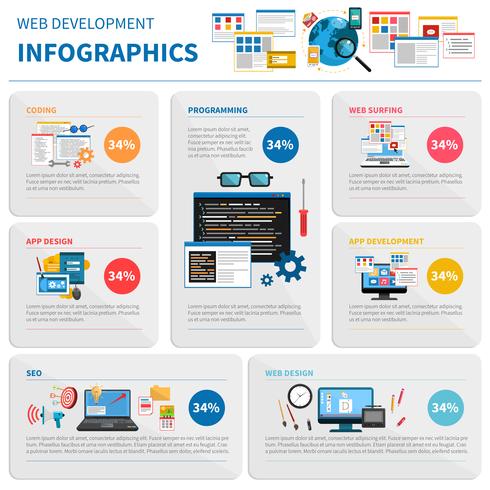Eager To Uncover How Internet Site Layout Has Transformed With Time? Study The Development From Simplicity To User-Focused Experiences
Eager To Uncover How Internet Site Layout Has Transformed With Time? Study The Development From Simplicity To User-Focused Experiences
Blog Article
Writer-Bradshaw Molina
In the past, internet sites were basic and concentrated on details. Navigation was straight, and style was for desktops. Now, individual experience is crucial. Data guides styles for easy navigation. Responsive layouts match various gadgets. Today, dark setting minimizes stress, and minimal menus improve navigation. Interactive features involve users, and vibrant visuals attract attention. AI assimilation boosts interaction. See how design has evolved to enhance your on-line journey.
Very Early Days of Web Design
In the early days of website design, simplicity preponderated. websites and ada compliance were basic, with restricted colors, typefaces, and formats. The focus was on supplying information as opposed to fancy visuals. Individuals accessed the web via sluggish dial-up links, so speed and capability were crucial.
Navigating food selections were straightforward, commonly situated at the top or side of the web page. Sites were designed for home computer, as mobile browsing had not been yet common. Web content was king, and developers focused on very easy readability over complex design elements.
search engine optimization copywriting was the key coding language used, and designers had to work within its restrictions. Computer animations and interactive features were minimal contrasted to today's standards. Sites were fixed, with little vibrant material or personalized user experiences.
Surge of User-Focused Design
With the advancement of internet site design, a shift towards user-focused layout concepts has actually come to be significantly popular. Today, producing web sites that prioritize individual experience is vital for engaging visitors and accomplishing service objectives. User-focused layout includes comprehending the needs, choices, and actions of your target market to tailor the site's design, content, and includes appropriately.
Developers now perform detailed study, such as customer surveys and use testing, to collect insights and responses straight from users. This data-driven approach assists in creating instinctive navigation, clear calls-to-action, and aesthetically enticing user interfaces that resonate with visitors. By positioning the individual at the center of the layout procedure, sites can supply an extra individualized and pleasurable experience.
Responsive style has actually likewise become a key element of user-focused design, ensuring that websites are optimized for different tools and screen sizes. This versatility boosts accessibility and usability, accommodating the varied methods individuals engage with web sites today. Basically, https://cashgyqhy.blogpixi.com/27230220/evaluating-the-influence-of-empty-areas-in-web-site-designs of user-focused design indicates a change towards producing digital experiences that focus on the needs and expectations of the end user.
Modern Trends in Website Design
Discover the current patterns forming web design today. One popular fad is dark mode style, supplying a smooth and contemporary look while reducing eye stress in low-light settings. An additional key fad is minimal navigating, simplifying menus and improving user experience by focusing on essential elements. Integrating micro-interactions, such as animated switches or scrolling effects, can create a more engaging and interactive web site. https://www.cravingtech.com/how-tech-is-changing-digital-marketing-in-2022.html continues to be critical, ensuring seamless customer experiences throughout numerous gadgets. Furthermore, utilizing bold typography and asymmetrical designs can include aesthetic rate of interest and draw attention to certain material.
Incorporating AI technology, like chatbots for customer support or customized suggestions, boosts user involvement and streamlines processes. Availability has likewise become a substantial trend, with developers prioritizing comprehensive style techniques to deal with varied customer requirements. Embracing sustainability by optimizing internet site efficiency for speed and performance is an additional arising pattern in website design. Working together with customer responses and information analytics to repeat and improve style continually is necessary for staying appropriate in the ever-evolving electronic landscape. By accepting these contemporary trends, you can create a visually appealing, user-friendly website that resonates with your target market.
Conclusion
As you reflect on the advancement of web site layout from the very early days to now, you can see just how user-focused design has actually come to be the driving pressure behind modern patterns.
Welcome the journey of adjustment and adaptation in website design, constantly keeping the user experience at the center.
Remain current with the most up to date trends and modern technologies, and never ever stop progressing your technique to create visually magnificent and easy to use internet sites.
Progress, adapt, and develop - the future of website design remains in your hands.
